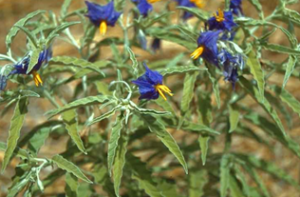
Figure 1. Silver-leaved nightshade (courtesy of HerbiGuide)
Description: Silver-leaved nightshade (Solanum elaeagnifolium Cav.) is an erect, 400-600 mm tall, multibranched silvery-white plant, with prickly stems, silvery hairy leaves and showy, purple, white or pink, five-petalled flowers with green to yellow anthers in the centre. It produces a pendulous, round, yellow, 10 mm diameter berry fruit. It often has annual tops and an extensive perennial rhizomatous root system. It has deep, aggressive, many-branched roots and creeping rhizomes that sucker freely and produce new shoots annually. Its root system can be up to 3,000 mm deep and 2,000 mm wide. Horizontal roots usually occur in the top 250 mm of soil.
Life cycle: Silver-leaved nightshade is a perennial weed. Germination takes place in autumn, and it grows slowly over winter producing a deep root system. Flowering starts in November and continues well into summer. Fruit is produced over several months. Top growth usually dies down over winter, leaving standing dead stubble for many months. New growth emerges in spring and the main growth occurs from November to March.
As a soil indicator: Silver-leaved nightshade is found in a wide range of soils.
Negative attributes: Silver-leaved nightshade competes with crops and is considered capable of causing significant yield losses. Heavy infestations can halve stocking rates.
Dispersal: Silver-leaved nightshade is spread by seed carried by water, animals, mud and vehicles and by root fragments. Dead top growth carrying mature fruit can be windblown. Birds and stock spread it by eating and passing viable seed. Individual plants produce up to 60 berries per plant with 4,500 seeds. Root fragments can be carried on machinery, with fragments as small as 10 mm long capable of producing new plants. New shoots can emerge from roots up to 500 mm deep.
Legislation: Noxious weed of NSW, SA, Tas., Vic., WA.
Non-chemical control methods:
- Control seedlings and seed set for three to five years to reduce seed numbers in the soil.
- Manually remove weeds by excavating soil to the depth of the root system and remove all shoots and roots. Plants established for more than a year may have roots to 1 to 2 m deep.
- Mow before berry formation to reduce seed set. Repeat as required throughout season. Mowing does not control the root system.
- Avoid cultivating as it moves root pieces to clean areas and new shoots can emerge from root fragments and roots up to 500 mm below the soil surface. Do not allow animals to graze plants with seeds.
- Under dry conditions, deep ripping may disturb the root system sufficiently to reduce, but not kill, an infestation.
Resources
HerbiGuide (HerbiGuide website)
Henschke Wines: A non-chemical weed control case study from the Adelaide Hills, SA
PIRSA weed control handbook for declared plants in South Australia
PIRSA Controlling declared weeds in SA – silverleaf nightshade
DPI NSW Silverleaf nightshade – Australian Best Practice Management Manual 2018
Contact
For further information, please contact:
AWRI helpdesk
Phone 08 8313 6600 Email helpdesk@awri.com.au

